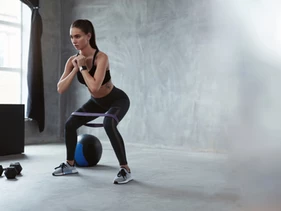by Michael Nieraeth, DPT, SCS, OCS, CSCS
Through this return-to-sport series, including measuring readiness to return to sport, return-to-sport tests for the arms, return-to-sport tests for the legs and return-to-sport tests for the spine, we spoke about properly loading your muscles, joints and body to prepare yourself for return-to-sport. But what’s the big deal about loading the body and how do you use that to help you return to your sport?
Most non-contact injuries occur during the eccentric phase of a movement. The eccentric phase is when the muscles are being stretched and at the same time, the muscles must work to slow down the body. With a baseball pitcher this occurs after the release of the ball. The muscles in the shoulder and body must work to slow down the arm when forces have been created that can dislocate the shoulder. Not being able to control those forces, or load, can result in a tear in the rotator cuff muscles or a muscle strain in the back. In basketball, as a player lands from grabbing a rebound, they will need to control their body using their trunk and leg muscles. If they cannot properly use their muscles to absorb the forces, or load, it may result in an ankle sprain or ACL tear. As you return to your sport, training your body to tolerate the eccentric load is pivotal. For the legs, this is mostly done via jump training and deep squats with heavy weights. For the shoulders, this can be done with dropping a weight or ball, catching it and slowly lowering it.
Load management, which has become a hot topic in professional sports, is managing the amount of forces placed on a player’s body over a season. Playing every minute of every game will take a toll on an athlete’s body and therefore, minutes in a game, reps and pitches must be monitored. To better assess the load on athletes, many teams have their players use wearable GPS/accelerometer/gyrometer units to track sprints, hits and several other statistics. The amount of tolerable load is varies among players and positions. Most teams compare an athlete’s quality of performance in a game to the training and exercise load as tracked by the wearable devices. Every team uses this information differently, but many coaches are starting to use this data to make decisions on substitutions in a game. Medical staff is also beginning to use these numbers to decide when an athlete can return to their sport and to help gradually return an athlete to their pre-injury levels.
Please feel free to reach out with questions or to schedule your appointment with a physical therapist.




